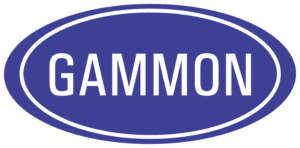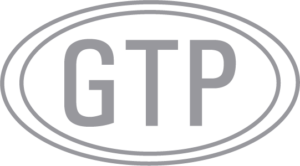GamGram 25: Ensayo y Clasificación de la Membrana Filtrante para Determinar el Grado de Contaminación con Partículas
Este GamGram se publicó al inicio con el número 13, pero su posición se ha cambiado ahora será el número 25 porque se han hecho varias revisiones a lo largo de los años lo han convertido en una discusión interpretativa de La técnica de calificación de color. Sería bueno releer la versión de 1996 del No. 13 antes de leer este artículo. Primero, repasemos los métodos:
- Método de clasificación del color – método de campo que usa la presión del sistema para forzar el paso de un volumen determinado de combustible a través de una membrana de prueba. Luego se califica el color de la membrana, cuando esta se halla seco, teniendo como guía el folleto de colores ASTM. “0” es hermoso; pero 10 es horrible. (Utilice el método ASTM D2276 Apéndice X1).
- Método gravimétrico con membranas pre pesadas – Dos membranas combinadas y pre pesadas de fábrica se colocan juntas, una encima de la otra y en el campo con la ayuda de la presión del sistema se hace pasar a través de ellas un volumen determinado de combustible. Luego, el laboratorio pesa cada membrana, y se resta el peso de la inferior a la superior y esto arroja la cantidad de suciedad recolectada en la membrana superior. Este método tiene la ventaja de evitar el pesaje previo, la codificación y el mantenimiento de registros antes de realizar el ensayo. (Use el Método ASTM D-2276).
Ambos métodos tienen una ventaja sobre el ensayo que se realiza en el laboratorio a una muestra que se colecta en una lata o frasco de vidrio, la ventaja a la cual nos referimos es que en los dos primeros métodos se realiza el ensayo directamente del sistema eliminado los posibles errores causado por el trasvase del combustible a los contenedores los cuales pueden estar contaminados o sucios. Si no convine usar los métodos anteriores, su último recurso es el Método ASTM D5452, que describe cómo colectar correctamente las muestras en contenedores adecuados y realizar pruebas gravimétricas en el laboratorio. Este procedimiento, revisado recientemente, recomienda que la muestra se tome de una tubería que fluye y que se utilice la técnica de peso de dos membranas pre pesadas.
Un argumento en contra del método de clasificación por color es que el color del combustible en sí puede influir en los resultados del ensayo al teñir la membrana, llevándole a pensar que el combustible está sucio.
Hemos oído hablar de combustible para aviones fabricado con petróleo crudo de North Slope que es capaz de teñir la membrana con una clasificación B6 sin embargo la diferencia de peso es “0”.
Es obvio que se necesita una prueba que dice si la clasificación del color tomado por la membrana se debe a la contaminación por partículas del combustible o pero el color propio del combustible. Una manera fácil es mirar la parte posterior de la membrana y compararla con el color del reverso, si hay diferencia de color entre ambas caras entonces hay suciedad contenida en el combustible depositada en la membrana. Nos asombra saber que aunque es una técnica antigua y simple no ha sido utilizada excepto por unas pocas personas.
El refinamiento de este procedimiento consiste en colocar dos membranas (una encima de la otra) en el monitor de plástico y luego comparar los colores de la parte superior de ambas. Nos gusta mucho más este método, no solo porque en el primero se puede alterar la suciedad acumulada en la parte superior cuando le das la vuelta en una tabla de colores, porque el color en la parte superior puede verse en la parte inferior de la membrana.
Nota: No use membranas pre pesadas con peso equivalente para esta prueba porque cuestan cuatro veces más que las membranas estándar.
Si aceptamos la lógica de las técnicas anteriores el gran problema ahora es decidir qué números de diferencia se aceptan entre la membrana superior e inferior Es aceptable una diferencia de muchos números en la calificación entre la membrana superior y la inferior. Según sabemos, ningún laboratorio ha publicado resultado alguno sobre ninguna investigación al respecto, pero seguramente alguien realizara esta investigación.
Uno de nuestros clientes integrante de una compañía petrolera tiene el siguiente procedimiento para garantizar una buena entrega de combustible a la aeronave:
Utiliza el Método ASTM D-2276 como método de prueba, recolectando 10 litros:
-
- Si al realizar la prueba de la membrana se muestra una lectura en la clasificación del color igual a 3 o superior (clasificación en húmedo), realice una segunda prueba con dos membranas.
- Si la diferencia de color entre ambas membranas es de más de 2 números, no use el combustible hasta que se haya realizado una prueba gravimétrica.
- Si la membrana superior tiene una clasificación de color de 6 o más oscura, independientemente de clasificación del color de la segunda membrana de inmediato detenga la entrega de ese combustible y realice una prueba gravimétrica para determinar si se puede usar.
En nuestra opinión modificaríamos este procedimiento clasificando las membranas cuando estén secas y especificando que un sistema gravimétrico realizará la prueba si la diferencia de color entre ambas es tan grande como dos números. De esta manera, aprenderá a descifrar el significado del peso en una diferencia de color de dos números para ese combustible. Una vez que sepa esto, y correlacione con diferencia de color, creemos que el plan anterior puede usarse con confianza.
No olvide que la técnica de calificación de color cumple es la vía para detectar un cambio en su sistema y esta es la respuesta del porqué las pruebas se hacen con un programa regular, en horario determinado y sin ninguna variación en el procedimiento. No describimos aquí un procedimiento paso a paso porque puede obtenerlo fácilmente de otras fuentes (folleto de instrucciones MiniMonitor). Sin embargo, hay algunos puntos especiales que nos inquietan:
- Sobre el Punto de Muestreo — (ver el Gamgram No. 6 y el Boletín No. 3). ¿Por qué algunas personas esperan obtener resultados exactos utilizando una conexión para muestreo que genera herrumbre y desechos? ¡No se ría! Este es uno de los peores problemas. A menudo encontramos válvulas de compuerta mohosas con empaques de grafito en el vástago en una conexión para muestreo donde todos los demás componentes son de acero inoxidable.
- La Técnica
- No sobre apriete el porta monitor metálico. No hay necesidad de aplicar mucha fuerza pues las juntas tóricas (O-rings) hacen el trabajo de estanqueidad (sellaje). Si tiene fugas, ordene los O-rings nuevos. Al apretar fuerte puede hacer que se rompa la membrana en el borde por donde se sujeta en el interior de la capsula.
- Nunca cambie de posición una válvula o arranque y pare la bomba mientras se efectúa la prueba. Si necesita hacer cualquiera de esas acciones, primero interrumpa el flujo a través de la membrana con la válvula selectora de la función lavar o ensayo (Flush/Test); después que se restablezca el flujo en el sistema, continúe la prueba abriendo la válvula Flush/Test (Lavar/Prueba).
- Nunca gire con rapidez la válvula de lavado (flushing), ¿Cuántas veces ha encontrado una membrana rota? Creemos que esto es causado por iniciar rápidamente el ciclo de lavado en un sistema con alta presión. El combustible no pasa por la membrana, la deriva (bypass), pero puede entrar al monitor de plástico por la salida del mismo comprimiendo el aire atrapado en él. Una membrana resiste muy poco y falla ante este ligero flujo inverso. Por eso gire lentamente la válvula para lavado (flushing).
- Otra causa de membranas rotas es la jeringa de doble acción que uno de nuestros competidores suministra con su kit de prueba. A veces la válvula de comprobación interna se atora, permitiendo forzar al combustible en flujo inverso a través de la membrana al empujar la manija hacia adentro. Para evitarlo, quite el monitor de plástico antes de empujar la manija.




